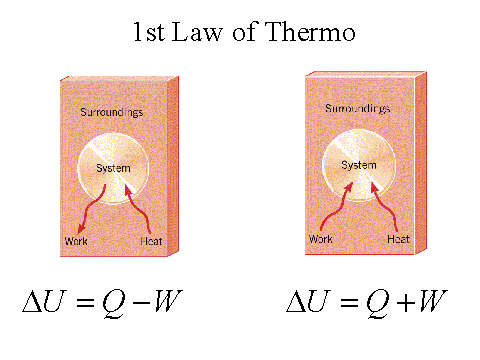The original reactants and products confined within the bomb, we say that reaction occurs at constant volume. Because volume is constant, V= 0 and no work is done, that is w= -PV=0 , that denotes that heat of reaction for a constant volume reaction as qv and:
U=qv
ENTHALPY,H, is the sum of the internal energy and pressure-volume product of a system :
H= U+PV.
The ENTHALPY CHANGE, is for the process between initial and final states:
Change in H = Change in U + Change in PV
If the process is carried out at a constant temperature and pressure (Pi=Pf) and with work limited to pressure-volume work, the enthalpy change is:
and the heat flow for the process under these conditions is :
Change in H = qp
Another alternate expression of enthalpy change can be written as:
P V= RT(nf=ni)
V= RT(nf=ni)
STATES OF MATTER
The heat required to vaporize a fixed quantity of liquid is called the enthalpy of vaporization. Usually the fixed quantity of liquid chosen is one mole and this quantity is called MOLAR ENTHALPY OF VAPORIZATION. Melting is described in the same method in which it is referred to as ENTHALPY OF FUSION.
STANDARD STATES AND STANDARD ENTHALPY CHANGES
We can define a particular state as standard for the reactants and products as the STANDARD ENTHALPY CHANGE in a reaction in which the reactants and products are in their standard states. This is referred to as the STANDARD ENTHAPLY OF REACTION which is denote with a degree symbol on H. STANDARD STATE of a solid or liquid substance is the pure element of compound at a pressure of 1 bar ( 10^5 Pa) and at the temperature of interest.

No comments:
Post a Comment